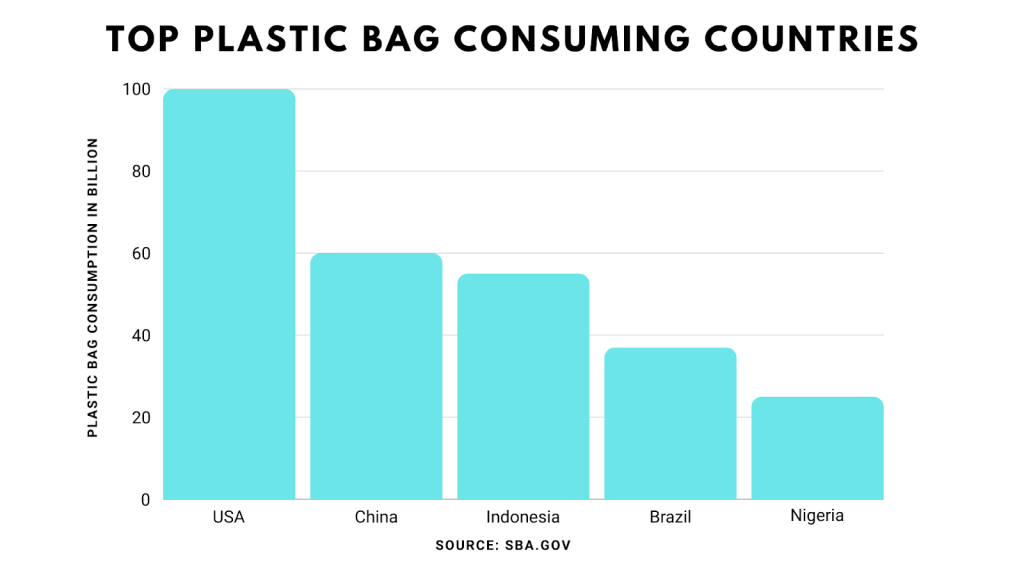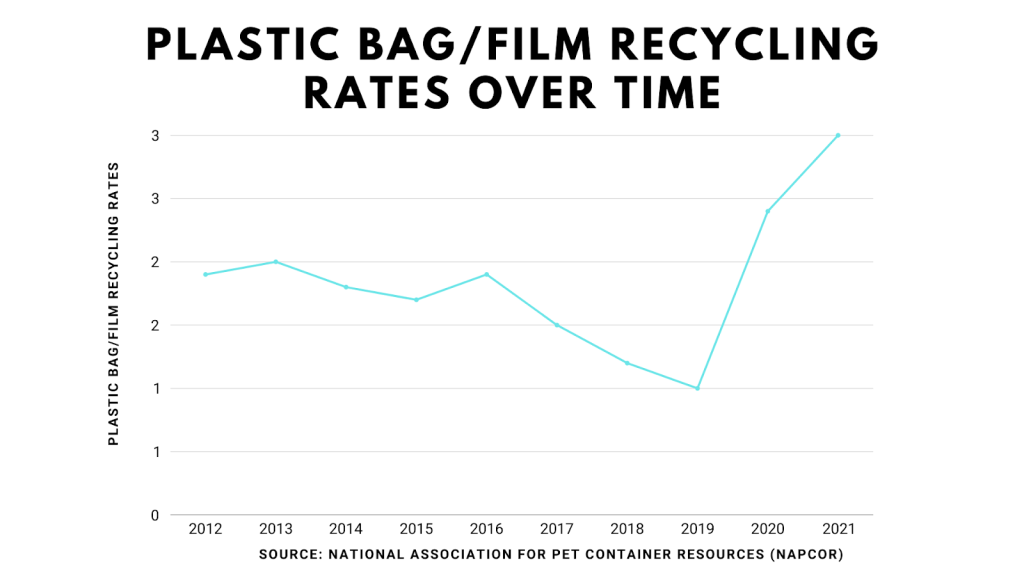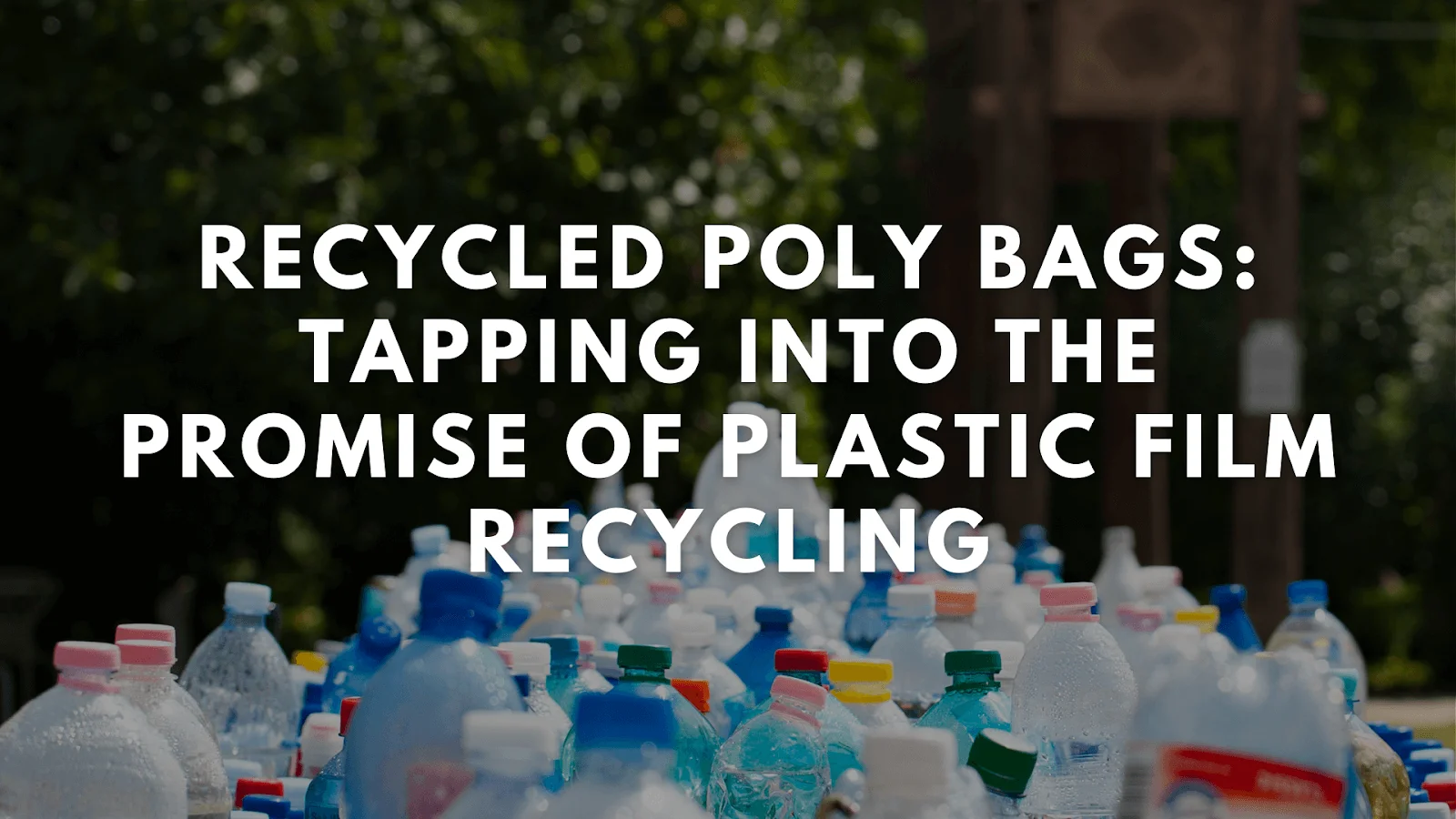Are recycled poly bags the solution to the global plastic waste crisis? From reducing carbon emissions to preventing resource depletion, discover the clear benefits of recycled polyethylene.
Despite challenges such as low recycling rates, innovative technologies, and strategic initiatives, there is hope for systemic change. Could advances in sorting systems and chemical recycling drive us toward a circular economy?
In this article, we explained the potential of recycled poly bags in combating plastic pollution and increasing environmental stewardship. Dive into the promising realm of plastic film recycling and explore how stakeholders are reshaping the future of sustainability.

The Clear Benefits of Recycled Poly Bags
Switching from virgin to recyclable poly bags offers major sustainability benefits over virgin resin made from post-consumer plastic waste.
These include reducing energy use and greenhouse gas emissions, conserving water, preventing the depletion of oil and gas feedstock resources, and addressing the plastic pollution crisis.
In particular, producing products with recycled polyethylene instead of virgin resin can reduce carbon emissions by up to 80%, as verified by comprehensive life cycle analyses by organizations such as the UK Environment Agency and the US EPA.
Extraction required for natural gas
This drastic reduction stems from avoiding the extraction, transportation, and intensive cracking processes required for petroleum and natural gas.
Additionally, the recycling process uses 50-85% less water based on industry measurements. With some virgin polymer plants using millions of gallons per year, scaling recycled content could greatly benefit regions facing ongoing water security threats. Avoiding drilling and fracking also helps reduce stress on local water tables and ecosystems.
This may increase the cost of raw materials in the long run
Finally, increased recycling unsustainably reduces fossil fuel reserves for plastic production. Continued reliance on finite resources such as cheap natural gas liquids from fracking contributes to supply volatility and increased price volatility as reserves dwindle.
This can increase raw material costs in the long run, whereas recycled feedstocks use up waste streams.
Beyond sustainability implications, recycled resin costs less than virgin plastic, depending on market fluctuations.
Availability of recycled polyethylene that displaces a portion of virgin demand provides a financial hedge for retailers and manufacturers. This makes companies less susceptible to sudden crude oil and natural gas commodity spikes that can destroy margins.
With increasing demand for both environmental and economic drivers, the use of recycled plastic by brands and retailers is expected to grow by at least 15% annually.
However, realizing these multivariate benefits depends on increasing the globally poor recycling rates for poly bags, packaging films and other plastic products.
However, realizing these benefits relies first and foremost on increasing the paltry recycling rates for poly bags and films globally:
- Just 1-3% of plastic bags and films were recycled in the US in 2021 (EPA)
- In the UK, the recycling rate for plastic film reached 22.2% in 2021 – still well below targets
- High contamination levels and insufficient collection infrastructure create systemic barriers

Reasons for Optimism – Recent Progress and Innovations
While current recycling statistics for polyethylene films paint a bleak picture, promising infrastructure improvements, pioneering corporate initiatives, and emerging technological innovations all showcase how these systemic barriers can be actively tackled:
For example, according to American Chemistry Council market research, accuracy rates for sorting equipment designed specifically for the flexible plastic stream rose from 50 to 95% from 2017 to 2022.
Facility upgrades such as optical sorters equipped with sophisticated spectroscopy, multi-layered neural networks, and real-time self-tuning calibrations now reliably extract polyethylene films from the waste stream based on polymer type.
This allows their diversion into dedicated streams for subsequent reprocessing rather than disposal as waste or contamination.
Strategic Initiatives to Unlock Systemic Change
1. Standardized labeling and target recycled content levels
2. Design for recyclability guidelines to improve reusability
3. Economic incentives for recycling via EPR legislation
Take, for example, Walmart Canada’s successful plastic bag collection program, which started in 2010. Customers can return bags and films to any store location, with over 100 tonnes recycled monthly (Walmart Sustainability Report). This was enabled by installing dedicated bins, educating staff and customers, and partnering with key recycling processors and NGOs.
Ongoing Innovation Essential for True Circularity
While heightened collaboration and nascent infrastructure can accelerate poly bag recycling rates from today’s low single digits, innovations across technological, materials, chemical, and mechanical domains remain imperative for economically sustainable closed-loop systems.
Advanced Chemical Recycling R&D
Though still in pilot phases, emerging chemical recycling solutions, including pyrolysis, gasification, depolymerization, and purification, offer means to process contaminated, multi-layer, and flexible plastic waste otherwise unviable for mechanical reprocessing.
Through heat, pressure, catalysts, or solvents, the output becomes specialized feedstocks usable for circular loops.
Government grants and private ventures now exceed $2 billion across North America around such chemical upcycling and plastic-to-plastic methods that can handle poly bags.
Biodegradable and Compostable Solutions
Compostable polymer blends can provide viable alternatives with end-of-life pathways using organic waste channels for targeted applications like grocery fruit stickers.
Commercialization remains slow due to cost and performance limitations, but natural starch combinations and cellulose show promise as potential substitutes. Solutions will vary based on specific usage criteria and risk factors.
Transition To Lifecycle Thinking
Ultimately, the path beyond incremental improvements requires all entities– from raw material suppliers to brand owners, governments, and consumers – to collectively envision end-of-life upfront through responsible product and process design optimizations.
This entails internalizing waste disposal negatives into business processes rather than offloading them to society, so plastics are valued as renewable resources rather than quickly discarded.
The past decade’s technology innovations around the collection, sorting, tracing, and reprocessing alongside pioneering corporate commitments provide reasons for tempered optimism that flexible and multi-layer plastic-like poly bags can move from the current broken, linear paradigm to a circular ecosystem.
Stakeholders across the lifecycle still require monumental change on multiple fronts to upgrade infrastructure, introduce holistic incentives, and revolutionize product delivery systems if we are to keep such invaluable materials flowing in the economy and out of landfills. The environmental and economic promise beckons us towards this path.
Frequently Asked Questions
- Are recycled poly bags safe for food contact and medical uses?
Yes, recycled polyethylene plastics approved by the US Food & Drug Administration meet the same safety standards as virgin plastics, making them suitable for food packaging, medical devices, and other sensitive applications.
- How can I determine if a poly bag is made from recycled vs. virgin plastic?
Check for certification logos like the Association of Plastic Recyclers and ask manufacturers for recycled content percentages directly. Standardized labeling protocols are still in development, but some regions now mandate minimum thresholds.
- What happens to poly bags that aren’t or can’t be recycled?
Most still end up in landfills or worse, as plastic pollution contaminates oceans and landscapes. Plastic-to-fuel conversion and waste-to-energy provide some options for items unsuitable for recycling, but preventing waste disposal remains paramount.

